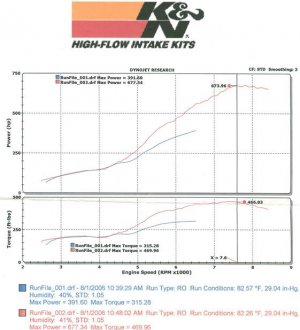I was wondering how possible a (useable) 9000 RPM would be.
If one was to upgrade:
1. AEM EMS
2. Bigger Camshaft
3. New Valvesprings & Retainers
4. Lighter Flywheel
5. Comptech Billet Oil Pump
6. Intake/Header/Exhaust of course
Do you think you could maybe hold 180 ft-lbs out to 9000 RPM? That would give you just over 300HP. This would probably be on a NA1 (3.0L) just because it would be easier to implement the AEM. However does the NA2 just use a bigger bore for the displament increase? If the stroke didn't change then I guess it might work too. I guess by the time you add all that up a CTSC is still more effective ehh :biggrin:
If one was to upgrade:
1. AEM EMS
2. Bigger Camshaft
3. New Valvesprings & Retainers
4. Lighter Flywheel
5. Comptech Billet Oil Pump
6. Intake/Header/Exhaust of course
Do you think you could maybe hold 180 ft-lbs out to 9000 RPM? That would give you just over 300HP. This would probably be on a NA1 (3.0L) just because it would be easier to implement the AEM. However does the NA2 just use a bigger bore for the displament increase? If the stroke didn't change then I guess it might work too. I guess by the time you add all that up a CTSC is still more effective ehh :biggrin:







